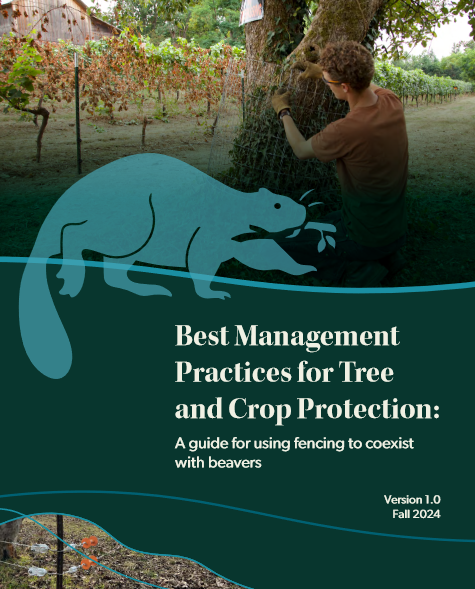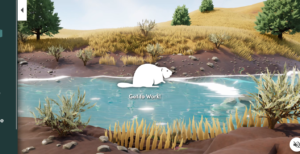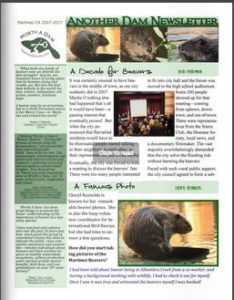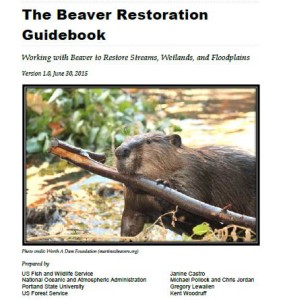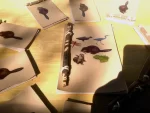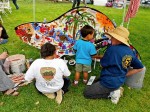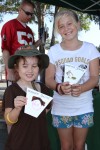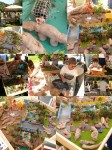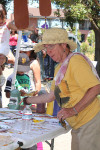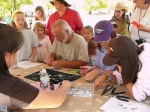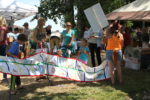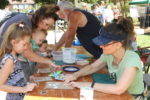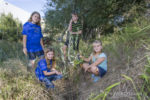 One of my favorite parts about reading Ben Goldfarb’s book was coming across delightful and unknown characters I hadn’t ever met before. Think about that. I write about beavers every day – 365 days a year – for the last decade and still these were not names I was familiar with. And of all those wiley wonderful new characters, Dr. Rebekah Levine of Wyoming was one of my very favorites.
One of my favorite parts about reading Ben Goldfarb’s book was coming across delightful and unknown characters I hadn’t ever met before. Think about that. I write about beavers every day – 365 days a year – for the last decade and still these were not names I was familiar with. And of all those wiley wonderful new characters, Dr. Rebekah Levine of Wyoming was one of my very favorites.
Now you get to meet her too.
Once considered the scourge of agriculture in the West, ranchers are now building beaver dams, and welcoming the creatures home

John Coffman learned the value of beaver dams the hard way.
When a beaver was plugging a head gate on a ditch on the scenic Red Canyon Ranch near Lander, he had a ranch hand shoot the animal, as
But the next two years brought heavy flood waters. Banks along the creek with no beavers eroded and the stream bed washed away until the head gate was several feet in the air and could no longer be used for irrigation.
A twin creek on the property that had about 40 beaver dams in one mile stayed together.
“We were talking and thought, maybe these guys weren’t only important for the ecosystem, but also the ag operation,” said Coffman, the land steward for Red Canyon Ranch, a property owned and operated by The Nature Conservancy.
Hey how about that! Beavers do useful things besides just causing problems! That must come as a shock to the frickin NATURE CONSERVANCY. What do you know?
 “Beaver activities are not really welcome where humans live because beavers make rivers really messy,” said Rebekah Levine, assistant professor of environmental sciences at the University of Montana Western who has spent her career studying streams and beavers.
“Beaver activities are not really welcome where humans live because beavers make rivers really messy,” said Rebekah Levine, assistant professor of environmental sciences at the University of Montana Western who has spent her career studying streams and beavers.
“We want them to be very stable, so stable, in fact we use them as borders. But that dynamism in rivers maintains the riparian forest and riparian vegetation that are so crucial to wildlife and critters in the western U.S. where riparian forests make up about 3 to 4 percent of the landscape, and at least 70 percent of wildlife depends on riparian habitat for some portion of their life history.”
Levine provides the science behind thinking about using beaver-like structures in areas where either beavers had been eliminated or where they were no longer desired for restoration. Her main idea was to improve wetlands for natural water connectivity and storage.
Instead of runoff and snowmelt rushing down a stream to its ultimate end in a river or field, the water seeps into the ground and then slowly seeps back out as summer seasons dry.
“We don’t have a lot of control over weather or climate, but can we increase the resiliency of watersheds that have some water now? How can we help watersheds make it through this tough little time?” she said. “Beaver dams are one way that you can naturally store some water.”
Beaver dams can also help maintain cooler water temperatures during warmer months – a necessity for cold-water fish species like trout.
While the work is still relatively new, results are beginning to support the hypothesis that beavers dams, and beaver-like dams, could be a critical part of maintaining tiny pockets of water an arid landscape.
What an article to come across. It wasn’t even tagged as a beaver article so my alert didn’t pick it up. I saw it by chance on Facebook, which is a perfectly fine way to share beaver news. The Ranch on Nature Conservancy land has started installing BDA’s.
In mid-August, Coffman hosted about 40 people on Red Canyon Ranch to finish building five dams on one ranch creek. The dams will be close to a road to allow anyone interested quick access to see the effects of the structures.
They are created to be impermanent, made of untreated fence posts, willow branches, sticks and mud. Water can then trickle through, working to slow down flows instead of stop them completely.
Another creek, the one that blew out a couple years ago, already has two beaver dam-like structures and another three on the way.
Coffman is quick to say that beaver dams aren’t necessarily always the answer, nor are live beavers tending those structures, but they definitely have their benefits.
“We had a handful of ranchers from here get together, and for the most part people were on board with beavers as long as they weren’t getting in the way,” Coffman said. “There were 10 folks here and they all saw the benefits of beaver for water reasons, but didn’t have good solutions for dealing with them when they caused trouble for irrigation.”
That’s why, in some areas, the structures will be maintained by humans instead of beavers. In other areas, where the creatures don’t interfere with irrigation practices, they could be welcomed back.
Researchers from Syracuse University will be following the progress on the ranch. They took measurements of water levels and channel shapes and used drones to create high resolution topographic maps before the structures went in, and will track them over time, said Laura Lautz, an earth sciences professor at Syracuse University.
There are definitely still issues to iron out, Coffman cautioned. Permits can be tricky, and research needs to continue. But he hopes to build on successes that agencies like Game and Fish have had on other properties to restore riparian areas to an otherwise dry land.
Hmm. I guess that’s progress. “I’m fine with those rodents as long as they give me exactly what I want and nothing whatever that I don’t want”. Baby steps I guess. Looks like Dr. Levine still has her work to do. Good luck!
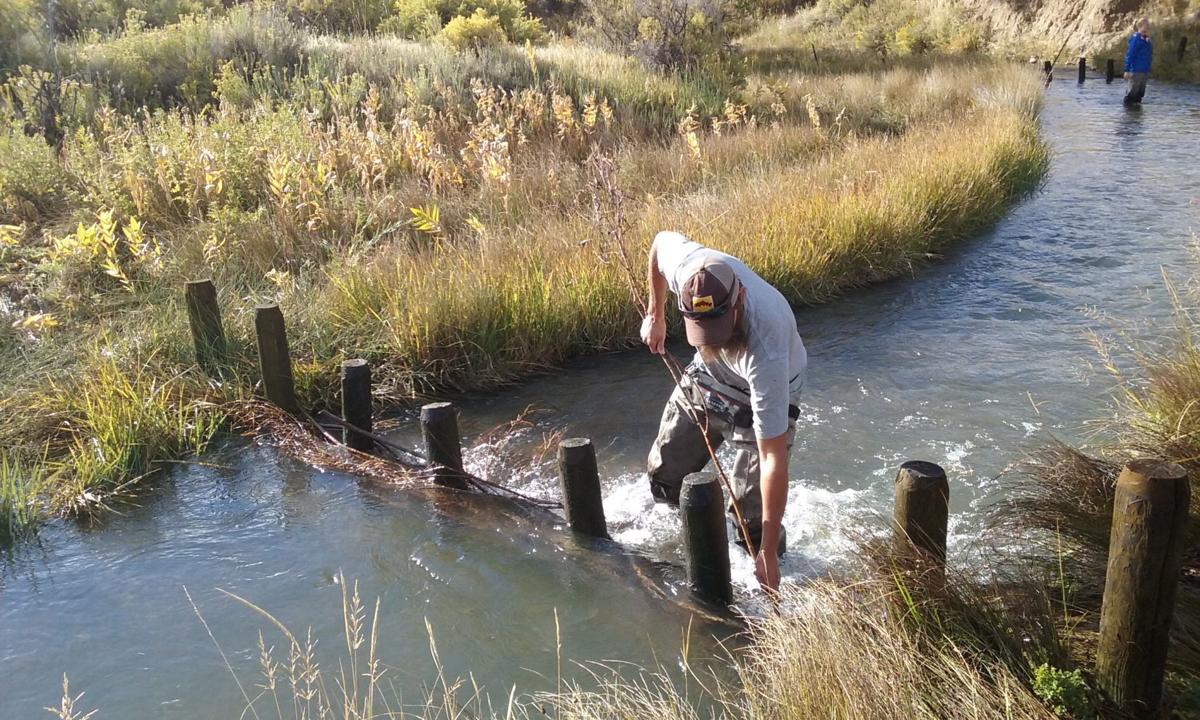
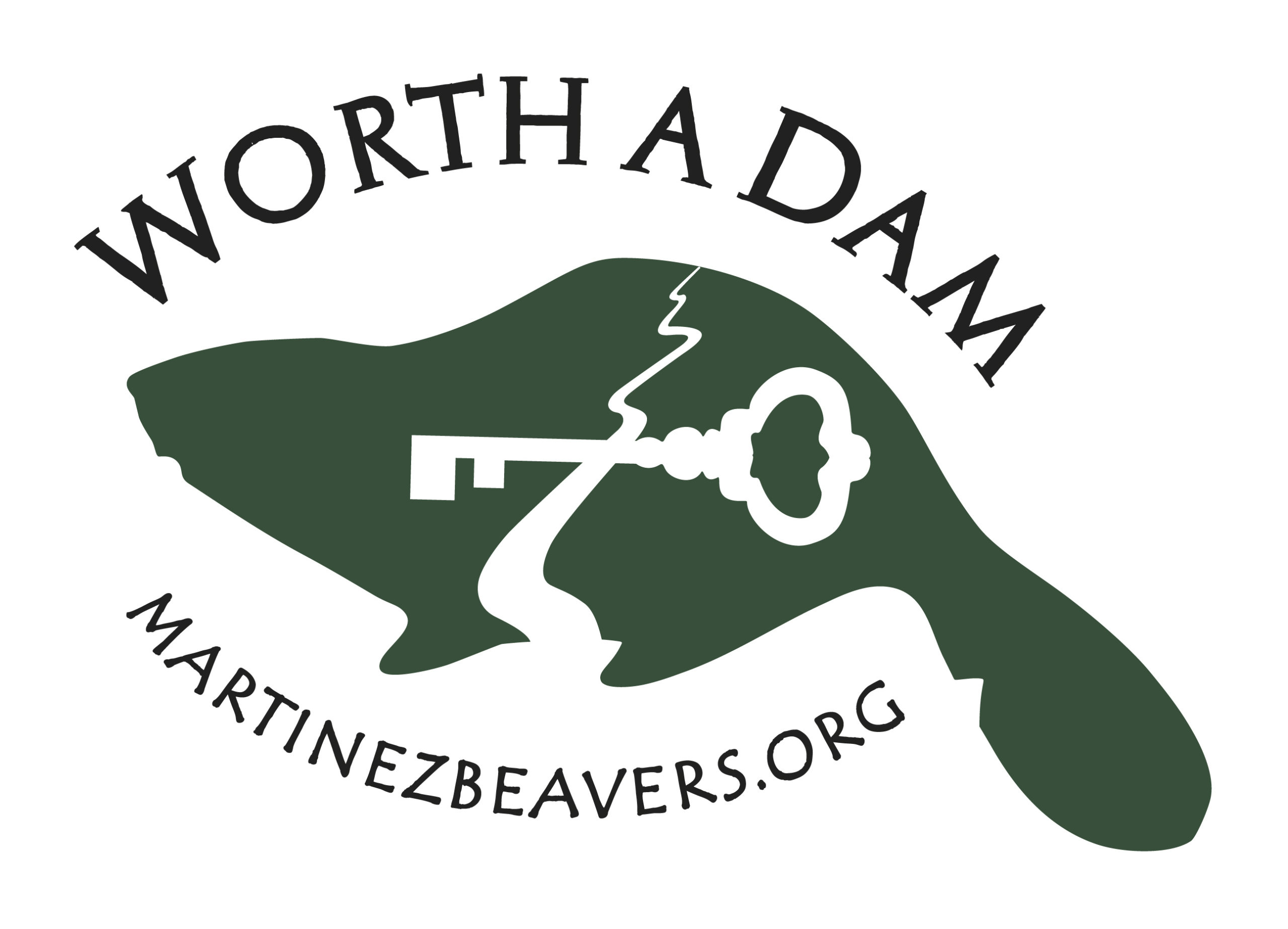



 We and our students would be very grateful for any contribution, no matter how modest. If you act in the next 48 hours before our fundraiser ends (Tuesday, August 21), your donation will be doubled by a generous benefactor.
We and our students would be very grateful for any contribution, no matter how modest. If you act in the next 48 hours before our fundraiser ends (Tuesday, August 21), your donation will be doubled by a generous benefactor.

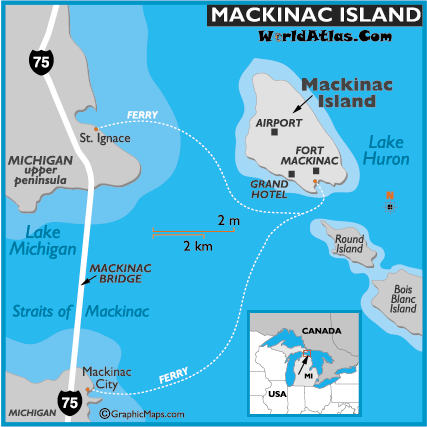 This morning’s special treat comes from Nancy May of Mackinac Island in Michigan. If the place sounds familiar it should. It was the location of John Jacob Astor’s beaver fur industry and ran the market for a hundred years.. When beavers reappeared on the island no one had seen them for 200 years. Nancy contacted me a while ago about the local beavers she had been observing and protecting.. She put together and account and some photos of the story and I knew you’d be interested
This morning’s special treat comes from Nancy May of Mackinac Island in Michigan. If the place sounds familiar it should. It was the location of John Jacob Astor’s beaver fur industry and ran the market for a hundred years.. When beavers reappeared on the island no one had seen them for 200 years. Nancy contacted me a while ago about the local beavers she had been observing and protecting.. She put together and account and some photos of the story and I knew you’d be interested







 include bas-relief beavers gnawing on terra-cotta tree trunks. (John Jacob Astor made his financial killing on beaver furs.) And a few short blocks north of our current offices, you can stroll down Beaver Street. Or flee down it, depending on the situation. What I didn’t know until I read Goldfarb’s book was that when the Dutch bought Manhattan from the Lenape in 1626, the island “was little more than a pot-sweetener: The real prizes were the 7,246 beaver skins that sailed to Europe.” I now choose to think that self-portraits by the hatted Vermeer and Rembrandt include New York City beavers on the masters’ heads.
include bas-relief beavers gnawing on terra-cotta tree trunks. (John Jacob Astor made his financial killing on beaver furs.) And a few short blocks north of our current offices, you can stroll down Beaver Street. Or flee down it, depending on the situation. What I didn’t know until I read Goldfarb’s book was that when the Dutch bought Manhattan from the Lenape in 1626, the island “was little more than a pot-sweetener: The real prizes were the 7,246 beaver skins that sailed to Europe.” I now choose to think that self-portraits by the hatted Vermeer and Rembrandt include New York City beavers on the masters’ heads.



